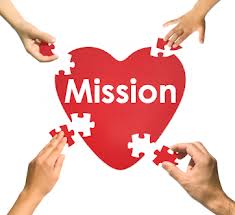 By Becky Lunders, teamWorks
By Becky Lunders, teamWorks
(Happy Valentine’s Day! I’m reposting this blog due to popular demand… enjoy!)
Working with volunteers is a lot like dating (in the traditional sense). I say traditional because I hear from my friends that dating in the 21st century is much different with online, texting, tweeting and such. It’s been eighteen years since I was on the mission to get the guy, but I remember it like it was yesterday. The parallels between recruiting and retaining volunteer leaders and dating are strangely similar.
The Prospect. When you’re single, there are two ways to meet Mr. Right: a chance encounter where you are both in the right place at the right time (he walks through the door and you just know). Or, more likely, it takes some effort; you put yourself out there to increase your chances of meeting your soul mate. The same is true with finding volunteer leaders. Most of the time, great volunteers don’t just fall into your lap. You have to put yourself out there and work to find one that’s a perfect fit. Put yourself in places that will help you meet volunteer leaders: chamber mixers, networking opportunities, volunteer in your own community. The leaders will shine, and you can make your move.
The Courtship. Once you’ve identified the prospect, you try to learn as much as you can to see if it’s a good fit. You spend time talking and learning about what they enjoy as well as their pet peeves. You observe their strengths and weaknesses. This get-to-know you time is essential for building a lasting relationship. Do you know how the other person responds to stress or pressure? Are they dependable or flakey? You invest time in the courtship and if it’s a good fit, you proceed with the relationship. Non-profits need to do the same with their volunteers. Get to know them. Learn why they want to volunteer for your organization. Find out what they are interested in doing for the organization. By understanding their motivation, commitment level and availability, you can give them a meaningful volunteer experience.
The Marriage. After investing time and energy into the relationship and determining it’s a good match, you’re ready to make the leap. Marriage is a big deal. It’s a commitment to stick together through good and bad, and strive to better one other. It holds up through the ups and downs as you come back to the common bond that brought you together in the first place. And yes – it’s true with volunteer leaders, too. If you get a volunteer leader who is passionate about your mission and willing to put in the time and energy to oversee a project, event or program, let them lead. Make them an equal partner and help them shine. Communicate regularly. Just like a marriage, you’ll have discussions, disagreements and celebrations. But the bond of the organization’s mission and their ability to make a difference will propel your project, program or event forward faster than doing it on your own.
Now What? It takes work to keep the spark going in a relationship. After a while, it’s easy to take it for granted, or just become complacent. But relationships that continue to thrive require nurturing. How can you expect to stay connected in a marriage if you never go on a date or take a vacation together (without the kids!)? You’ve got to get creative to keep things fresh and it takes effort. And guess what? Volunteer leaders require similar effort. It’s easy to get a really great volunteer in a leadership role and then focus your attention elsewhere. Sometime, you might even forget to thank them, or encourage them. So like any solid relationship, you’ve got to put some energy into keeping the experience fresh. Ensure they don’t get burned out by challenging them with new and different roles. And always make time to acknowledge their efforts. After all, Thank You to a volunteer is like I Love You to your significant other. Just a few simple words that speak volumes.
Those of you who have experienced my trainings know that I firmly believe that nonprofit work is a business… with a heart. That means running your operation like a business which requires strategic planning, accountability, training and sales. Did she just say SALES? Yes, you are in the BUSINESS of SELLING YOUR MISSION.
Think about the brands to which you are most loyal. Those companies you keep coming back to because of the quality, the experience and/or the relationship you have with them. Now apply that same way of thinking to your work in the nonprofit sector.
Quality. We come back to brands that produce quality products. We feel there is value to what we are buying. For the nonprofit sector, that’s the volunteer experience. If you create a quality experience for volunteers, they will keep coming back. But how do you get that customer (volunteer) in the first place? Some wait (and wait and wait and wait!) for them to walk through the door. Once in a blue moon, that happens. But more often than not, you’ve got to go out and find them. Offer up the opportunity to get involved and “sell” the mission. It takes a salesperson’s determination to seek out and recruit highly skilled, leadership volunteers. Don’t be shy. Look at what roles you need to fill and make a plan to get out in the community and connect with people. Let them know how they can help achieve the mission of your organization.
Experience. In the retail world, we tend to return to those retailers that provide a good experience. We don’t mind spending our money with them because the experience is pleasant. And we tell our friends about it, ultimately becoming marketers for our favorite brands. Nonprofit work is no different. Whether it’s an event or a committee meeting, volunteers come back if it’s a good experience. You can increase the chances if you involve volunteers in the planning (think leadership volunteers!). Volunteers tend to know what other volunteers find appealing. Ensure you provide education, information and a testimonial so they can feel the mission in action. This enhances the experience. Lastly, commit to making any volunteer experience a good use of their time. Start and end committee meetings on time. Show your appreciation for their commitment. Remind them of the difference they are making.
Relationship. Good salespeople create a quality experience for their customers. Great salespeople build a relationship with their customers. The one thing that will take you from good to great in the nonprofit world is your ability to build relationships. Volunteer managers who genuinely care about their volunteers and become vested in their story are the most successful. If people believe in what you’re selling (your mission) and they feel good about their experience (how they’re being utilized), they tend to come back. We know if takes a lot of work to recruit a new volunteer. Those who take the time and energy to build relationships don’t have to always be in recruitment mode. They are able to retain their volunteers. And with that comes increased commitment to the organization which translates into time, talent and money. What are you waiting for? You’ve got a mission to sell!
I love Halloween and dressing up in costume. It’s a chance to be anyone or anything you want to be. A quick trip to the local Halloween shop reveals that superhero costumes are once again very popular. That brings me to the one superpower I wish everyone had – initiative!
I think initiative is like a superpower. It allows people to get things done, and done quickly. It propels people forward at a rate that bystanders can’t understand. It dances under the cover that “things just get done,” when really someone, somewhere decided to jump in and make it happen. Yet the majority of people don’t use their initiative! In fact, many don’t realize they have it.
I see it with kids. Most will walk past a piece of garbage on the playground figuring someone else will pick it up. I see it with volunteers. While they know there is work to be done, many will sit around and wait until someone gives them clear, step-by-step instructions. I see it in adults. They get in a rut – at work, at the gym, in their relationship. Most wait for someone to get them out of the situation, instead of just grabbing the bull by the horns and making things happen.
Those with initiative look like real-life superheroes. They exhibit leadership skills.
Others follow their lead. They get things done before most even realize what needs to be done. People who have initiative (strike that – people who USE their initiative!) have the confidence to make things happen. They take risks. They put themselves out there and produce results. Let’s be more like Superman. Apply that superpower of initiative, people!
 Social media is an interesting monster and I think we can learn a bit about volunteer recognition from it. When you post a picture or status update, you experience instant gratification when people leave a comment or “like” it. These affirmations fuel the desire for more. In some cases – to a manic level. We like the way if feels when people give us the thumbs up.
Social media is an interesting monster and I think we can learn a bit about volunteer recognition from it. When you post a picture or status update, you experience instant gratification when people leave a comment or “like” it. These affirmations fuel the desire for more. In some cases – to a manic level. We like the way if feels when people give us the thumbs up.
A quick story: my 12-year old son doesn’t do social media (he doesn’t even have a phone). Yet someone felt the need to establish an Instagram account and pretend to be him. In four days, he had 154 followers. The imposter seemed motivated to see comments, as they would respond quickly and post more comments. It spread like wildfire until I posted a note to the culprit which produced enough peer pressure to shut it down.
I share this story because it’s human nature to want to feel popular, appreciated and loved. I’m sure this silly seventh-grader thought it was fun to pretend to be someone else and get all the love and kudos that were waiting every time he/she turned on their phone. There is a positive we can take from this that applies to volunteer management.
I believe volunteers need that constant, ongoing and instant gratification for the work they do. Trouble is, as nonprofit managers we rarely make time to do it. It always falls to tomorrow’s to-do list. If you can make recognition a priority, it will go a long way towards sustaining your volunteers. The recognition need not be expensive – something simple and heartfelt will do the trick. It just must be genuine and timely!
Social media can help you do that. A Facebook post or text message after an event will help your volunteers reaffirm the work they do for your organization. A phone call (yes – a PHONE call!) just to say thanks may be the catalyst for them to come back again. Appreciation is one of the great tools we have to retain great volunteers.
Now we just need to get our young people to find a passion and stop wasting so many hours “liking” meaningless things on Instagram. Just think the impact these kids could make as volunteers working together for the good of the community! The affirmation they would experience would be so much more real and meaningful!
Today is the first day of school for my kids. We just moved to a new house in a new community where we know… each other! So last night at the dinner table, we talked about meeting new people and making new friends. My nine year old made a wise observation, “I can be anyone I want to be. No one knows me or what I can do. It’s very exciting!” Yes, it is.
I think back-to-school is second only to the start of a new year for reevaluating, regrouping and refocusing. It’s a chance to start fresh; to let your talents, passions and humor shine through. You migrate to people with whom you have something in common and the friendships start from there. Kids have the classroom and the playground. We have volunteer opportunities.
I think back to the first day of kindergarten for my oldest. His teacher let us know that we’d be going on lots (I mean LOTS!) of field trips and she’d need chaperones for every single one of them. While it was a big volunteer commitment, we did it… happily! You see, over the course of that school year, we got to know the kids and the parents. We bonded over outdoor hikes, agricultural fairs and painting classes. We became friends that could depend on each other and help each other out.
I’ve experienced the same thing with youth sports. My dearest friends are the people with whom I’ve worked the snack shack, weeded the baseball field and interacted with as Team Mom. I’ve found that hard work, laughter and working together for the greater good cements relationships.
Whether you lead a school, a youth sports program or a nonprofit, remember the social factor is a big reason for volunteering. Make sure you provide opportunities for your volunteers to get to know each other, to laugh together and even cry together. This is the glue that will hold your committees together when the going gets tough, and it’s the bond that creates dependable fun teams of volunteers who will move your mission forward.
So, like my kids on the first day of school, I will immerse myself in my new community. I’ll start with volunteering.
totalteamWorks.com
I’ve decided February is one of my favorite months for several reasons that are all tied together. And while none has to do directly with volunteer management, they are all analogous to the nonprofit sector and the way we work with volunteers. It’s all about relationships.
It starts with Groundhog Day. This “holiday” (and I use that term loosely) is synonymous with doing the same thing day after day, as Bill Murray reminds us in the movie by the same name. Day after day, he wakes up to that buzzing alarm clock only to learn that today will be just like yesterday. Those who work in nonprofit often feel that way. We plow ahead with limited resources, too few volunteers and too much work, only to realize that we will probably do the same thing again tomorrow… and the day after that. This year, Punxsutawney Phil saw his shadow, indicating six more weeks of winter. Like the groundhog, you can do back into your cave and wait; or do something now to build the foundation for your next event. We can’t see the light at the end of the tunnel. … until we learn to fully utilize our volunteers. Change it up and do things differently to keep it fresh. You will reveal opportunities and volunteer leaders that probably were always there in the shadows, you just didn’t see them. Like the groundhog, look inside yourself to find the motivation.
Next is Valentine’s Day. Who doesn’t want to be in a relationship around Valentine’s Day! Depending on where you are in your relationship might dictate your level of enthusiasm for this day. We celebrate the start of a relationship. We reflect on the butterflies we had on the first date; and the awkward moments during that getting-to-know-you stage. Passion drives us and makes us put effort into the relationship. Then we get comfortable, and sometimes complacent. We have to work to reignite the spark and keep things fresh. On occasion, we have to dig deep to remember what initially drew us to “the one.” The same is true when working with volunteer leaders. You’ve got to make sure it’s the right match for both the volunteer and the organization. The staff partner and the volunteer have to get to know each other. It requires building trust, and that takes time. It’s exciting and commitment is strong. But like a relationship, if you don’t do something to keep it fresh, you’ll lose it. It never hurts to bring it back to the mission to reignite the passion that the volunteer once had. After all, it’s about relationships and finding that right volunteer.
Last comes Mardi Gras. I just returned from a conference in New Orleans and boy, do those people know how to party! Parades happen throughout most of the month. Some are little neighborhood parades; others are grand events. All are celebrations; and each is a chance to engage the community in a deeper way! The festive, party atmosphere makes me think about how we celebrate our volunteers. We need to do it more. We need to recognize their efforts often, in ways big and small (got beads?). We need to celebrate their successes (and not wait until the event is over and the money is in to applaud their work). Create your own Mardi Gras and celebrate your volunteers. It does wonders for retention, and creates an atmosphere of gratitude which is contagious. Oh, and just the exposure might introduce new people to the organization and bring you new volunteers!
I challenge you to change up ONE ELEMENT of how you approach your volunteers in order to retain them. Don’t become too predictable. I challenge you to reflect on ONE VOLUNTEER RELATIONSHIP that makes you love your job and reflect on why it works. Remember them as you work to recruit your next great leader. Finally, I challenge to be CELEBRATORY and let that volunteer know just how grateful you are for all they do. After all, it’s about relationships and the better the relationships, the more successful the effort.

by Becky Lunders, teamWorks
This is the time of year when I get lots of questions from my kids about Santa and his elves and how in the world they make all those toys and get them into the hands of children around the world. My eight-year-old asked me the other day if Santa has Elf Leaders who oversee the other elves. That got me thinking… Santa and his elves are a great example of leadership! Santa has built an infrastructure to support his operation, allowing him to get the job done without burning out. He’s got the workers and the leaders and together they create magic, just like the volunteer leadership model I preach. And it really does works, as indicated in the case study below.
A group of volunteers in Jacksonville, Florida came together and orchestrated an event that exceeded everyone’s expectations. Their Santa is a guy named Lee, a very passionate, committed volunteer. He believes in the vision and put together some Elf Leaders to handle different parts of the project. They pulled in worker elves to take care of all the details to get the job done. Everyone did their part and the result was magnificent! DogFest Jacksonville raised more than $61,000 this first year, while recruiting volunteers and raising awareness at the same time.
Canine Companions for Independence adopted this volunteer-driven, staff-supported model and launched DogFest this fall. DogFest is the signature national event of Canine Companions. It raises money to pair highly-trained assistance dogs with special people and in the process, changes lives. They have lots of dedicated volunteers across the country, but not a lot of staff. Thus, it is essential for the event to be volunteer-driven. A Chairperson oversees a committee of volunteer leaders, who then puts together their sub-committee to accomplish all the little tasks. With this model, the organization can build capacity without burning out key volunteers or staff. Speaking of staff…
Another accomplishment for this event is Mrs. Claus (a.k.a. Cathy, the Staff Partner). She recruited the right man for the job (Santa) and then let him run with it! She supported the effort from afar (she had to – she doesn’t live in the area)! She managed the volunteer committee remotely by serving as a resource, coach and cheerleader. Her clear and ongoing communication made it possible for her to know what was happening, and it allowed the volunteers working on DogFest to feel supported. Instead of running around doing everything, she was able to recognize the efforts of her team every step of the way. This might call for a round of milk and cookies in celebration!
As we head into the holidays, think about your role as staff in working with volunteers. Do you try to do everything? Or are you okay delegating projects, events and programs to leadership volunteers? Consider doing that with just one project. It’s the key to building organizational capacity. You’ll be amazed what people will do if you just let go and let them! Here’s to a jolly holiday season!

by Becky Lunders, teamWorks
Practice what you preach. I’ve always thought that was good advice. I try to do just that in both my personal and professional life. I make a living teaching people how to better utilize volunteers. It seems appropriate that every now and again I put myself in the position to put my own counsel to the test. Chairing the Halloween Dance Spooktacular at my son’s middle school seemed like the perfect opportunity to see if this volunteer management stuff really works.
My son is in sixth grade and new to this school. I’ve always felt the best way to get to know new people is to volunteer with them. So, I signed up to head up the Halloween Dance. My quest: to see if it really is possible to take on a project and feel good (not bitter) when it’s over. I knew I couldn’t do it all myself (nor did I have any desire to)! I know that many hands make light work so a committee was essential. An email went out and I made a pitch at a parent meeting and landed ten volunteers.
We had a meeting and everyone took on one piece. We had a tickets gal, and a promotion gal. One person wanted to head up decorations; another took on food. We had someone in charge of set-up / clean-up; and another whose sole job was to organize and execute a flash mob to promote the dance! We had a prize/contest volunteer, and I ended up with activities. If everyone does what they say they are going to do, this will be cake!
I scored on the group of women I had on my committee. They were all gracious and friendly and talented. They said what they would do, and they did it. No one dropped the ball. I checked in with them and communicated weekly leading up to the event to ensure they were on track and feeling supported. It was not overwhelming for anyone. We met once more the week before the event to confirm details.
On the night of the dance, we executed everything perfectly. Nearly 400 tweens attended and had the time of their lives. Instead of rushing around doing everything at the dance, I was able to do a little care and feeding of the volunteers. It feels pretty good to be able to walk around and thank people for volunteering. Or offer them a bottle of water or a change of venue if they were tired of being in the same place. I was able to show my gratitude to those who gave a bit of their time to make things happen. And in the end, no one was burned out or bitter. In fact, several were talking about how “next year we can do THIS or THAT!”
So this volunteer management thing really does work. A committee structure will support your event or program, but only if you as the leader are willing to delegate and then empower your volunteers. That enables you to focus on the magic of the three R’s of volunteer management: recruit, retain and recognize. I’m happy I was able to practice what I preach. Otherwise, I’d be burned out and vowing never to do THAT again. Instead, I see this gig being a long-term commitment that might even land me some new friends! Ah – that social piece – we can’t forget about that!
School is back in session and that means field trips are in full swing! Every time I chaperone a field trip, I learn something; and most of the time, I can apply it to the work I do in leadership development. This time, I learned more than I ever dreamed.
I accompanied a class of 6th graders aboard the tall ship Balclutha on the San Francisco Bay. This educational, overnight outing takes them back in time to the 1906 earthquake. The kids become the crew. The eleven-year-olds are arranged in teams with a first mate as leader of the other mates in the crew. Each adult chaperone a.k.a. tall sailor is assigned to a group with strict orders to not interact with the kids. We are only there for safety, with AVAST our only spoken word.
Trained educators play the role of Captain (grouchy), First Mate (strict & mean), Second Mate (pal to crew members) and Cook (goofy). They give instructions to the first mates that are often curt and hard to interpret. The kids have to figure it out. For 18 hours, they learn the workings of the ship and how to be self-reliant. While learning to cook, raise the sail, lower the dorey, and mop the deck, they also learn teamwork, respect, leadership and delegation. The kids serve as the nightwatch crew, rotating and waking a new crew every ninety minutes throughout the night. The kids are tired, but it’s not a bad gig under the light of a full moon rising above the Golden Gate Bridge.
As a tall sailor, not being able to jump in and help was challenging to say the least, especially since I was assigned to the Galley Crew which was responsible for making the meals and feeding the entire crew! What I observed was magical. Kids were plopped into leadership roles and had to give “orders” to their (class)mates. Some were uncormfotable at first. Others had trouble delegating the task and wanted to just do it themselves. But over time, they rose to the occasion. They built trust, applauded each others’ efforts and came together as a team. By morning, leaders were delegating, teams were gelling and crews were helping other crews… when no one asked them to!
For me, the takeaway is that we are all much more capable than we realize. People will figure things out if we just let them problem-solve and find the answers. They will also feel really great about the accomplishment once they’ve gone through that process. Likewise, volunteers are more capable than we realize. You’ve got leaders in your organization. If you’ll just let go and let them do the work, they will surprise you. The result will be more dedicated and committed volunteers because they feel they are part of the solution. Like onboard the Balclutha, amazing things happen if we just empower our people!
I love being around really passionate people who deeply believe in the mission of the organization for which they volunteer. The enthusiasm that fills the room at such a gathering is addicting. It’s like a drug. You can’t get enough of it. You want to bottle it up and take it with you. You want to experience that natural high every day. Although I’ve never done drugs, I do understand wanting to duplicate that feeling of euphoria! During my years as a volunteer management consultant, nonprofit staffer and volunteer, I have sipped the Kool-Aid many times in many different organizations!
I recently had the honor of speaking at the National Volunteer Leadership Conference for Canine Companions for Independence. These folks raise highly-trained assistance dogs to partner with people with disabilities, providing independence and companionship. Aside from the adorable puppies-in-training (they do just melt your heart!), Canine Companions has passionate volunteers. Like your volunteers, they are deeply committed to the mission and the life-changing work they do. The result is enthusiastic volunteers who are ready to work!
So once the conference is over, what do we do to keep the enthusiasm running high? Volunteers feel a sense of urgency to raise more money so they can serve more people. Non-profits are wise to capitalize on this by providing action steps towards the goal. Create a way for volunteers to step into leadership roles while they are still flyin’ high! Develop a plan to engage your volunteers and put them to work on something. Heck, give them a project and let them run with it! Time is of the essence.
Don’t let the conference buzz wear off before you mobilize your volunteers. This drug called enthusiasm is readily available to any organization that has a visionary staff, a strong volunteer leader and a group of volunteers ready to work. And the best thing is no prescription is required!





